Resources
From time to time we will issue interim guidance and advice to enable operators to continue to fly safely while new Civil Aviation Rules and Advisory Circulars are under development. This will help operators make the most of the advantages that new technologies offer today and ensure a smooth transition to New Southern Sky in the future.
If you are seeking past presentations from events, please see the relevant event under the Events page.
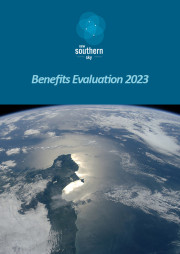
New Southern Sky Benefits Evaluation 2023
This report estimates both qualitative and quantitative benefits being delivered by the New Southern Sky (NSS) Performance Based Navigation (PBN) implementation projects. NSS is a 10 year programme of work to enhance New Zealand’s aviation infrastructure. It introduced systems and procedures across the aviation domain to implement PBN, and is completed with the final set of PBN instrument flight procedures (IFP) for Hawkes Bay and Gisborne promulgated on 30 November 2023.
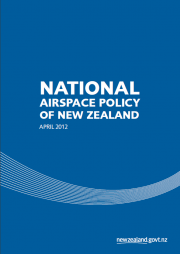
National Airspace Policy of New Zealand - April 2012
This policy statement is intended to provide guidance to the aviation sector in New Zealand as to the direction that the development and modernisation of the airspace and air navigation system will take over the next decade (or longer) to ensure the safe and efficient movement of air traffic. This statement is designed to set a framework under which the Civil Aviation Authority can develop a National Airspace and Air Navigation Plan, and designate different areas and classes of airspace consistent with this policy and the National Airspace and Air Navigation Plan.
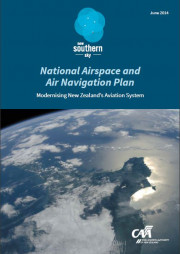
National Airspace and Air Navigation Plan 2014
In line with international efforts, this National Airspace and Air Navigation Plan has been prepared to provide clear direction on the safe, cohesive, efficient and collaborative management of New Zealand’s airspace and air navigation system over the next decade. It sets out the practical steps that need to be taken by all participants in New Zealand’s aviation system to transition to the new technologies, and to effectively manage airspace as demand increases and technology advances. It has been developed as a key document under The National Airspace Policy of New Zealand (2012), and the National Infrastructure Plan (2011). It is also referenced as a key initiative in the Intelligent Transport Systems Action Plan, which outlines a proposed work programme on Intelligent Transport Systems for the next four years. It will be regularly reviewed.
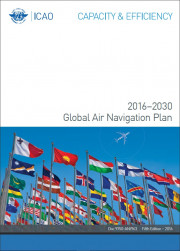
ICAO Global Air Navigation Plan 2016-2030 (5th Edition 2016 Doc 9750-AN/963)
The fifth edition of the ICAO Global Air Navigation Plan (GANP) is designed to guide complementary and sectorwide air transport progress over 2016–2030 and is approved triennially by the ICAO Council. The GANP represents a rolling, 15-year strategic methodology which leverages existing technologies and anticipates future developments based on State/industry agreed operational objectives.
The Block Upgrades are organized in non-overlapping six-year time increments starting in 2013 and continuing through 2031 and beyond. This structured approach provides a basis for sound investment strategies and will generate commitment from States, equipment manufacturers, operators and service providers.
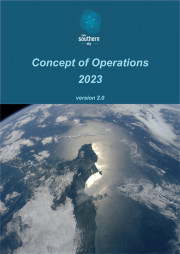
New Southern Sky Concept of Operations 2023
This document, the Concept of Operations (CONOPS) is a description of how a set of capabilities may be employed to operate in New Zealand’s domestic airspace in 2023. The CONOPS is aligned with the National Airspace and Air Navigation Plan1 (NAANP). The CONOPS is a collaborative document, produced with input from the stakeholders that has taken guidance from the NAANP and used it to provide a reference framework for the New Southern Sky (NSS) programme end state. The CONOPS models today’s view of the airspace in the New Zealand Flight Information Region (FIR) aviation system 2023. Aviation industry input enables a segmented view, by operations type, of this system.

ADS-B in New Zealand FAQs
ADS-B is a GNSS dependent surveillance system. The aircraft receives data from navigation satellites via a GNSS receiver and then broadcasts information, up to twice a second, on its identification, position, altitude, speed, and intention. The broadcast system is the ADS-B transponder. The data received by ground stations are then transmitted to the air traffic management (ATM) system for display to air traffic controllers who use it to maintain aircraft separation in controlled airspace.
To find out more about ADS-B and what it means in New Zealand, read on.
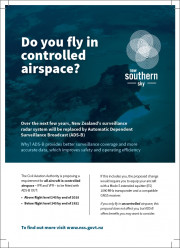
Do you fly in Controlled Airspace?
Over the next few years, New Zealand's surveillance radar system will be replaced by Automatic Dependent Surveillance Broadcast (ADS-B).
If you fly in controlled airspace, this proposed change affects you. This flyer has some tips for you to consider.
National Infrastructure Plan 2015
The third Infrastructure Plan reaffirms the Government’s long-term vision, first set out in 2011, that New Zealand’s infrastructure is resilient and coordinated and contributes to a strong economy and high living standards. The Plan supports this vision in three ways - providing a better understanding of the services that will be needed in the future; improved information about, and management of, our existing assets; and ensuring we have the right settings to make better investment decisions in the future.
National Infrastructure Plan 2011
The publication of the second National Infrastructure Plan marks another important step in this government’s commitment to ensuring New Zealand has the infrastructure to support our economic growth aspirations.
The Canterbury earthquakes have highlighted the critical role that infrastructure plays in our day to day lives. In the hours and days following the earthquakes, power, water and communication services and air, road and rail travel were critical to ensuring the basic needs of residents in the quake zone were met. Emphasis now is on repairing damage to infrastructure and, where possible, making networks more resilient.
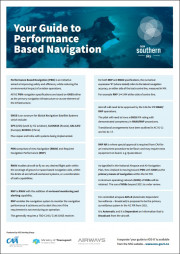
NSS Performance Based Navigation Flyer
Performance Based Navigation (PBN) is an initiative aimed at improving safety and efficiency while reducing the environmental impact of aviation operations.
All NZ PBN navigation specifications are based on GNSS either as the primary navigation infrastructure or as one element of the infrastructure.
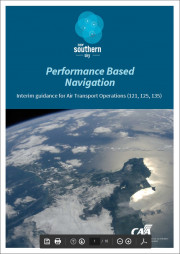
Performance Based Navigation - Interim guidance for Air Transport Operations (121, 125, 135)
The CAA intends this document to be used by Air Transport Operators for guidance until new Performance Based Navigation (PBN) rules and Advisory Circulars are finalised. This will be superseded when formal requirements and guidance are published.
Aspects of PBN have been in use in New Zealand for a number of years, in particular the use of Authorisation Required Instrument Approaches at Queenstown and RNAV10 in Oceanic airspace. The National Airspace and Air Navigation Plan (NAANP) envisaged a much wider deployment of PBN.
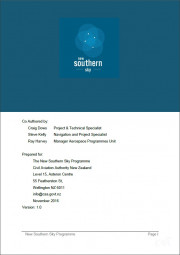
Ground Based Navigation Aid Strategy
The National Airspace and Air Navigation Plan1 (NAANP) identifies Performance Based Navigation (PBN), based on the use of GNSS, as the means for modernisation of navigation in New Zealand, enabling safety, environment and economic benefits. With the implementation of PBN, it is important that the current Ground Based Navigation Aid (GBNA) infrastructure is reviewed to ensure it supports safety criteria while achieving efficiencies. These efficiencies will be realised through GBNA rationalisation. This document provides the aviation industry of New Zealand with a strategy for the rationalisation of the GBNA infrastructure to support PBN.

2017 NSS Road Show Presentation
The 2017 Road Show Presentation is the briefing slides that accompanied the travelling road show in November 2017. Topics included cover and update on the NSS Programme, Performance Based Navigation (PBN) and changes to the surveillance system (ADS-B) provided by New Zealand's air navigation service provider, Airways.
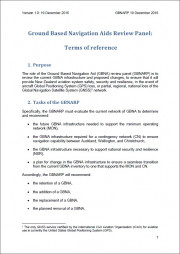
GBNA Review Panel Terms of Reference
The role of the Ground Based Navigation Aid (GBNA) review panel (GBNARP) is to review the current GBNA infrastructure and proposed changes, to ensure that it will provide New Zealand aviation system safety, security and resilience, in the event of aircraft Global Positioning System (GPS) loss, or partial, regional, national loss of the Global Navigation Satellite System (GNSS) network.
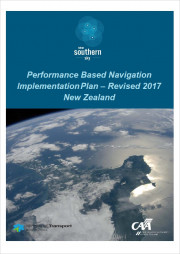
New Zealand PBN Implementation Plan - Revised 2017
This is the second edition of the New Zealand Performance Based Navigation (PBN) Implementation Plan.
The Plan, delivered under the New Southern Sky programme in consultation and collaboration with key stakeholders, aims to have a full PBN environment operating in New Zealand by 2023.
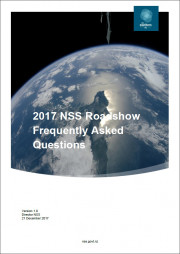
2017 NSS Roadshow FAQs
Following on from the successful 2017 NSS Roadshow, the NSS Roadshow Frequently Asked Questions brings together the broad range of questions and feedback provided by aviation sector audiences from across New Zealand. The NSS team has attempted to record and highlight most of the questions put forward by participants at the Roadshows.
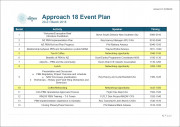
Approach 18 Event Plan
This confirmed event plan for Approach 18 has just been released by Director New Southern Sky. To register your participation in this event, please see the Events page on this website.
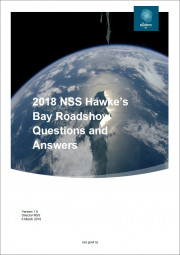
2018 Hawke's Bay Roadshow Questions and Answers
Following on from the successful 2017 NSS Roadshow and through high levels of interest from the Hawke’s Bay aviation community, the NSS Hawke’s Bay Roadshow Questions and Answers brings together the broad range of questions and feedback provided by aviation sector audience that attended the event on 22nd February 2018.
2018 NSS Conference Programme
It’s finally here. The draft New Southern Sky Conference programme has been released today.
Director NSS, Steve Smyth says ‘This programme has been designed to have something for everyone. With the Workshop content we are introducing this year, we hope to satisfy those with a thirst for more of the technical detail.’
We appreciate that time is precious in the aviation industry and not everyone can make a 2 day conference. For those who can join us for just one day, you can sign up for the day that suits you best.
The conference is open to all bona-fide aviation industry participants. It’s free. All we ask is that if you do sign up, you turn up, otherwise you are going to prevent someone else participating. Places are strictly limited and going fast.
We look forward to seeing you in Auckland (Beca, 21 Pitt Street) 15/16 May.
New Zealand PBCS Implementation Plan
The Performance Based Communication and Surveillance (PBCS) Plan, delivered under the New Southern Sky programme, describes how PBCS operational capability will be deployed into the New Zealand aviation system.
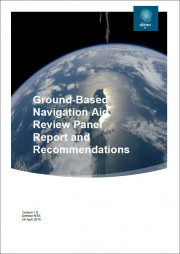
GBNA Report and Recommendations
The Ground-Based Navigation Aid Review Panel was set up by the New Southern Sky Working Group to fulfil the recommendations of the National Airspace and Air Navigation Plan with respect to ground-based navigation aids (GBNAs). The report and recommendations are being released so inform the wider sector of proposed changes to traditional ground based infrastructure.
Your guide to PBN navigation specifications and equipment standards
This one page guide will provide you with a summary of the PBN navigation specifications that are being deployed in New Zealand, as well as the equipment standards required to operate in a full PBN environment.
Your guide to the PBN Regulatory Framework project
This one page guide will provide you with a summary of the PBN Regulatory Framework project,including what is being delivered and how.
Your guide to installing ADS-B and PBN equipment
This two page guide will provide you with a summary of Acceptable Technical Data (ATD) and the process for the use and/or development of ATD in relation to ADS-B and PBN equipment installation
Provisional schedule for the delivery of PBN regulatory change
The schedule for PBN regulatory change has been produced through extensive consultation with industry and the New Southern Sky Working Group (NSS WG) who have assisted in identifying which rule issues should be prioritised, and which should be addressed later. It will show operators and users of the system where in the Civil Aviation Rules (CARs) they may see regulatory changes and when they will likely be delivered.
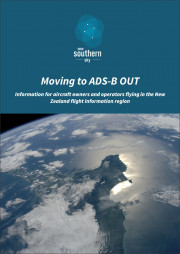
NSS-ADS-B-General-Info-2018.pdf
New Zealand is implementing Automatic Dependent Surveillance - Broadcast (ADS-B) as its main source of surveillance data for air traffic management. With the new Rule coming into effect in July 2018, find out what you need to know about ADS-B and how this might affect you.
ADS-B in New Zealand FAQs - June 2020
ADS-B is a GNSS dependent surveillance system. The aircraft receives data from navigation satellites via a GNSS receiver and then broadcasts information, up to twice a second, on its identification, position, altitude, speed, and intention. The broadcast system is the ADS-B transponder. The data received by ground stations are then transmitted to the air traffic management (ATM) system for display to air traffic controllers who use it to maintain aircraft separation in controlled airspace.
This document brings together a wide range of information for anyone looking to upgrade their aircraft to realise the benefits of ADS-B. Whether you are a General Aviation (GA) pilot or a commercial carrier entering the New Zealand Flight Information Region (FIR), this document should be your first port of call.
If you have any questions relating to ADS-B in New Zealand that aren't answered in this document, please email adsb@caa.govt.nz.
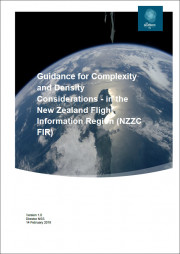
Guidance for Complexity and Density Considerations
As new technologies are introduced into the aviation sector and commercial and private user demand for airspace grows, the complexity and density of the operating environment will continue to evolve. A balanced view of the whole of system will enable the most efficient use of airspace consistent with the safe operation of aircraft and the expeditious flow of air traffic.
This Complexity and Density document is provided for guidance only. It is not intended as a stand-alone document, but to support the requirements under the Civil Aviation Act, Civil Aviation Rules, National Airspace Policy of New Zealand, National Airspace and Air Navigation Plan, ICAO Annexes and Documents, and relevant Policy material. The principles to follow in decision making on airspace matters are as outlined in the National Airspace Policy of New Zealand.
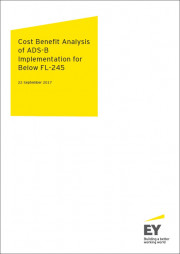
Cost Benefit Analysis on ADS-B Below FL245 Proposed Mandate
CAA has engaged EY to conduct a cost benefit analysis (CBA) on the proposal to mandate the use of ADS-B Out for aircraft operating in controlled airspace below FL-245.
The purpose of this report is to identify the costs and benefits of implementing the ADS-B mandate below FL-245, and to help the CAA identify the policy options that could ease the transition to ADS-B.
This report provides an economic analysis of the proposed ADS-B mandate below FL-245. It explicitly excludes the benefits to aircraft that operate above FL-245, even though they may receive some benefits from implementation of the below FL-245 system.
Performance Based Navigation Operational End-State 2023: A Regulatory View
The Performance Based Navigation Operational End-State 2023: A Regulatory View document provides operators with a regulatory view of the future PBN operational environment in the New Zealand Flight Instrument Region (FIR). It describes how Instrument Flight Rule (IFR) operators will conduct PBN operations in future, including consideration of extraction and recovery operations in the event of a GNSS failure, as well as contingency operations in the event of a long-term GNSS outage.

NSS Concept of Operations 2023 Version 2
The National Airspace and Air Navigation Plan of 2014 provided guidance on how the eight separate domains that make up the system would contribute specific modernised elements. However, it did not provide an ‘end state’ or picture of what the system would look like at the completion of implementation.
The New Southern Sky (NSS) programme addressed this issue by inviting the NSS Working Group to produce a Concept of Operations (CONOPs). A CONOPs is the system users’ perspective on how a system will operate.
This work was originally undertaken in 2016 and updated this year. While all Working Group members were invited to input and comment on this collaborative document, Squadron Leader Matt Tristram (NZDF) led the effort to deliver Version 2. This version includes updated information on Performance Based Navigation (PBN) including the supporting Ground Based Navigation Aids Minimum Operating Network recommendations and Unmanned Aircraft operations.
The CONOPs models today’s view of the NZ FIR aviation system in 2023. Aviation industry input enables a segmented view, by operations type, of this system. The scenarios provide a detailed stakeholder view of how airspace layers will be flown by operators and the capabilities they will employ for optimum efficiency and safety.
Performance Based Navigation for Part 91 IFR operators
A handy one page guide on Performance Based Navigation for Part 91 IFR operators
PBN Standard Operating Procedures Guidance Material (Short version)
PBN Standard Operating Procedures (SOPs) Guidance Material to support operators produce their own PBN SOPs
PBN Standard Operating Procedures Guidance Material (with additional guidance)
PBN Standard Operating Procedures(SOPs) Guidance Material to support operators produce their own SOPs
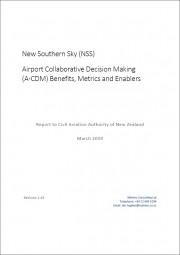
NSS A-CDM Metrics Report
A recent study undertaken by the NSS team into the benefits and potential metrics for A-CDM has uncovered some really interesting results. The full report is now available for download and review.
ADS-B Installation Process Diagram
The following diagram illustrates the high-level process for installation of your ADS-B kit. See the ADS-B website for more details: www.nss.govt.nz/adsb/ (simply copy this address into your internet browser).
NSS Benefits Evaluation - May 2021
Reviewers of this report should also read this article (https://www.nss.govt.nz/contents/acknowledging-contributors-to-the-foundation-of-the-new-southern-sky-programme/) which provides information on the background to PBN development in New Zealand that was not available to the author at the time of publication.

New Southern Sky Benefits Evaluation 2023
This report estimates both qualitative and quantitative benefits being delivered by the New Southern Sky (NSS) Performance Based Navigation (PBN) implementation projects. NSS is a 10 year programme of work to enhance New Zealand’s aviation infrastructure. It introduced systems and procedures across the aviation domain to implement PBN, and is completed with the final set of PBN instrument flight procedures (IFP) for Hawkes Bay and Gisborne promulgated on 30 November 2023.